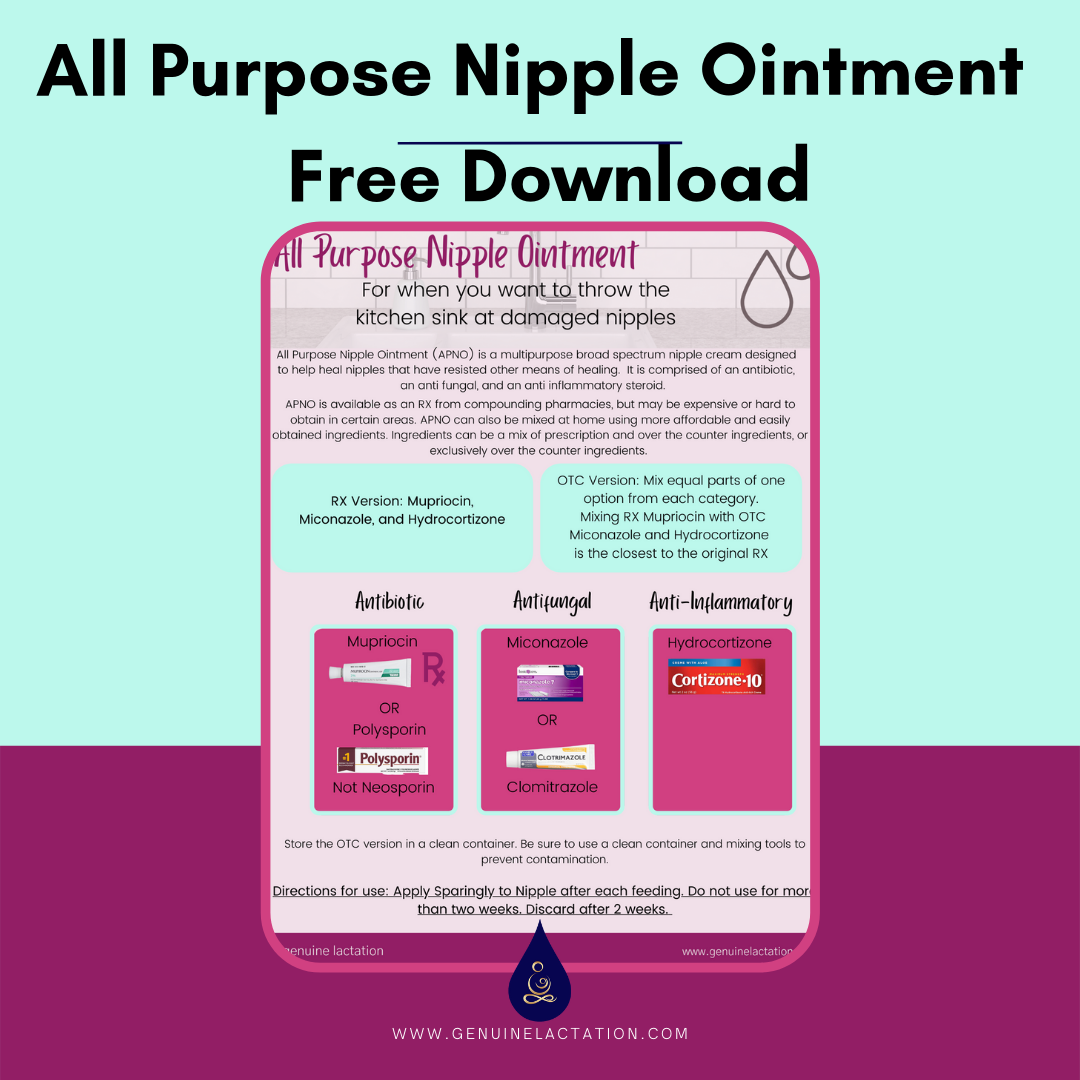All Purpose Nipple Ointment Guide for Nipple Damage
What to know about this magical nipple cream
All Purpose Nipple Ointment (APNO) can be magical! It attacks the three common reasons nipples are struggling to heal with an antibiotic, anti-fungal and anti-inflammatory. It is not a standard nipple cream. It’s is topical medication used to treat damaged and infected nipples.
The problem is, it is poorly understood, easy to mix up yourself with over-the-counter ingredients,, and it is very easy to use wrong. It can actually delay addressing the real reason the nipples are getting damaged, create infections that are resistant to treatment, and prolonged use of the steroid component can result in skin break down. Even magical nipple cream has limitations.
It is frequently recommended in Facebook groups as a magical answer to damaged nipples, and parents end up using it for weeks or months to manage the damage caused by poorly fitted pump flanges or a faulty latch. By the time they finally decide to seek professional help the damage has been ongoing for an extended period of time and the effort required for the parent to address the situation is much higher and more difficult than if help had been sought earlier. When this happens it’s not such a magical fix after all.
So when is APNO a good solution?
When there is a clear nipple infection of an unknown cause. APNO is a great solution when we just don’t know since it covers multiple options.
When we have identified the cause of the damage and need to quickly heal the nipple to prevent further damage.
When other solutions with less side effects have failed.
APNO really should be used under the care of a health care provider and lactation consultant, but I understand many will opt to use this on their own. If you are determined to try this on your own here is my tip:
If you have to use this cream for more than a week, or stopping the cream causes the damage to come back, you need to see a lactation consultant ASAP. Don’t mistake this cream for the skilled care you may need to find true remedy. DIY Lactation Care is only good to a limit.
Commonly Asked Questions:
Is there a difference between the prescription version and the homemade version?
The prescription version has a more effective antibiotic for sure.
This can also be achieved with the homemade version if the expense of the compounded cream or availability are an issue, by replacing over the counter polysporin with prescription mupriocin.
Mupriocin is much more cost effective than the prescription APNO, and the cost of APNO is a challenge for many families.
How long can I use it for?
APNO can be used for up to two weeks.
If at the one week mark things aren’t really well healed you need skilled care to figure out what is going on.
APNO won’t fix a latch or a bad flange fit, it’s magical but not that kind of magical.
How do I apply it?
APNO is applied after feedings or pumpings by applying to the nipple with a clean finger very lightly.
The nipple should barely be shiny.
Do I need to wash it off?
If applied correctly it will be completely absorbed and it won’t be a problem or need to be washed off.
Do I need to use breast pads with it?
Yes. APNO can stain bras and clothing.
Clean dry breast pad also protect healing nipples.
It will wash out of reusable pads if you are sensitive to disposable breast pads.
I do recommend disposable breast pads when dealing with damaged nipples and wound care to help limit opportunities for infection.
Do I need to talk to my doctor about it?
YES! Talk to your doctor before using any medications or supplements. You can print off my downloadable information sheet if your doctor doesn’t know what APNO is. Most will know and be familiar with its uses though.
Will APNO treat a breast infection?
No, APNO will only address superficial skin infections.
It would not be appropriate to treat a breast infection.
I have seen doctors prescribe APNO in conjunction with an oral antibiotic for a breast infection to prevent secondary nipple infection.
If you have any questions about APNO not mentioned here, or if you are not sure this is the option for you I am always here to help you get the information you need to make sure you meet your breastfeeding goals.

